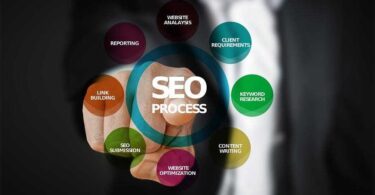Data visualization is an essential aspect of data analysis that cannot be ignored in today’s world. Big Data’s rise necessitates practical tools to make sense of the trillions of data rows generated daily. Therefore, we rely on the graphical representation of information and data via visual elements like charts, maps, and graphs.
This visualized data is useful particularly for tech students when translating millions of spreadsheet numbers into meaningful real-world conversations. However, getting started with data visualization is typically overwhelming for new students. Luckily, we’re here to help with that. Below is a comprehensive guide to data visualization for students.
Data Visualization Tools
Nowadays, large amounts of information must be analyzed to make strategic data-driven decisions in many spheres of society. Often time, consuming these large data sets isn’t always simple. They’re typically so large that it’s impossible to discover anything substantial from them at first glance. Therefore, there’s a need for data visualizations. Creating these data visualizations is complicated and time-consuming. Indeed, it can be done manually by taking data sets with hundreds of entries and creating visualizations for each.
The drawback here’s the hundreds of hours you’ll spend plotting dots on scatter charts and other representative mediums. Therefore, experts rely on data visualization tools to automate the visualization process of large data sets. Human culture is predominantly visual, so our eyes are drawn to colors and patterns. Interactive visual mediums like infographics, tables, charts, graphs, and dashboards engage our visual senses better for easier understanding.
Translating data into meaningful information is an engaging activity that’s worth considering as a career or pastime. To get started, you need appropriate software capable of analyzing data and representing it meaningfully. Reputable software companies, such as TIBCO, can help with that.
TIBCO is an enterprise-level software company with a strong focus on Data Visualization, Predictive Analysis, and Data Science. TIBCO unleashes the potential of real-time data for making quicker and smarter decisions. With their free Spotfire software license, they intend to equip college students and the next generation of data analysts with the latest tools.
College students can get access to TIBCO software by signing up for their free software license, valid for a whole year. With this subscription, you can familiarize yourself with the latest software being used in the data visualization industry. As such, you gain valuable experience that’ll undoubtedly come in handy for a future data visualization career, when combined with your tech degree. TIBCO is a recognized industry leader in the Data Science software products field. What’s more, they’re a trusted and experienced company, providing innovative software solutions to clients for several years.
Data Visualization Techniques
Knowing your target audience is vital to data visualization because your project is tailor-made to address them. Understanding your audience also shapes critical decisions like your chart choice and the details to include. Choosing the right chart is also essential to data visualization for effective communication. It would be best to create rough drafts on paper to find the best options instead of relying on software programs.
After a rough idea of your visualization, creating and editing a computer draft are the next significant steps towards your data project completion. Here, it’s vital to rely on text to convey your message effectively. Text size, font type, subtitles, among others, matter here, so keep this in mind. Colors are also crucial to enhancing your communication during data visualization.
Colors make charts more appealing and easy to follow. These colors must be legible in grayscale, and for people with color-vision deficiencies. Finally, test your drafts using the data visualization checklist to make essential changes and improvements to your work. After this, your data is ready to be shared.
To conclude, Big Data in this present age calls for better capacity to process and understand these data volumes. Data visualization tools make this possible by converting complex Big Data into simple, comprehensive data representations using less time and more productively.






